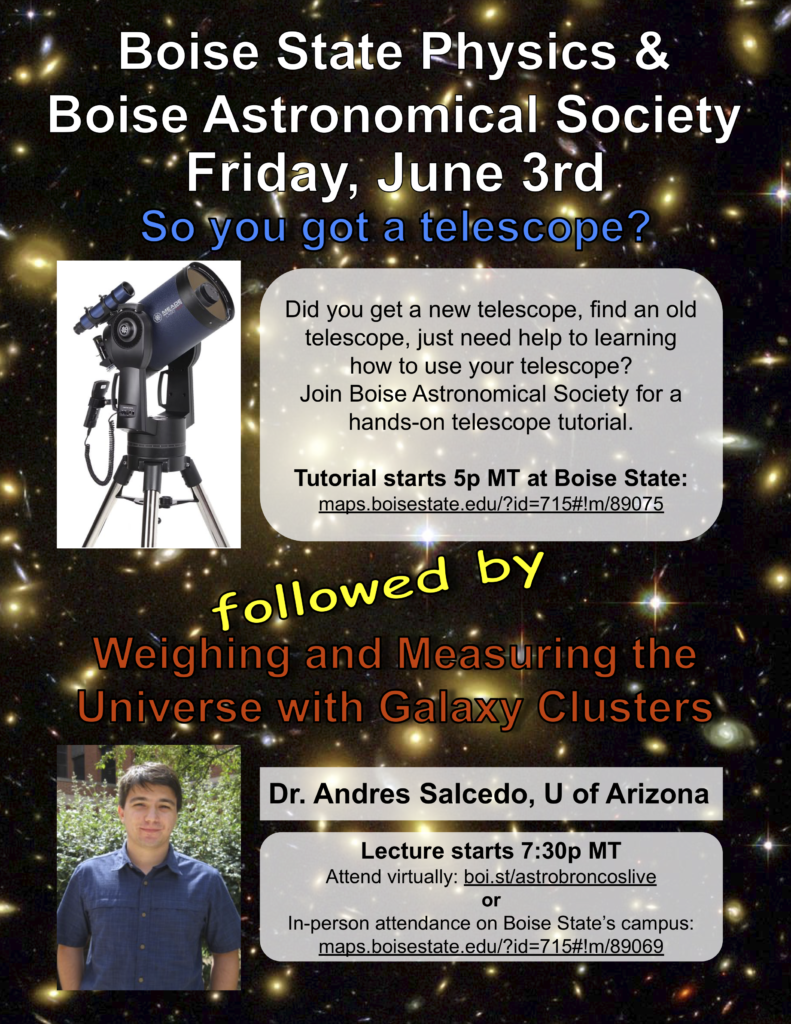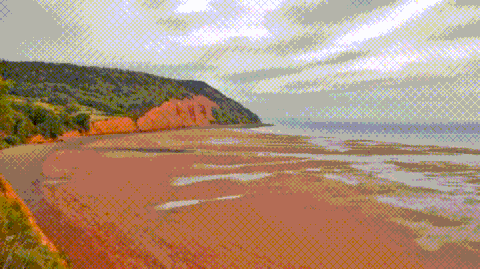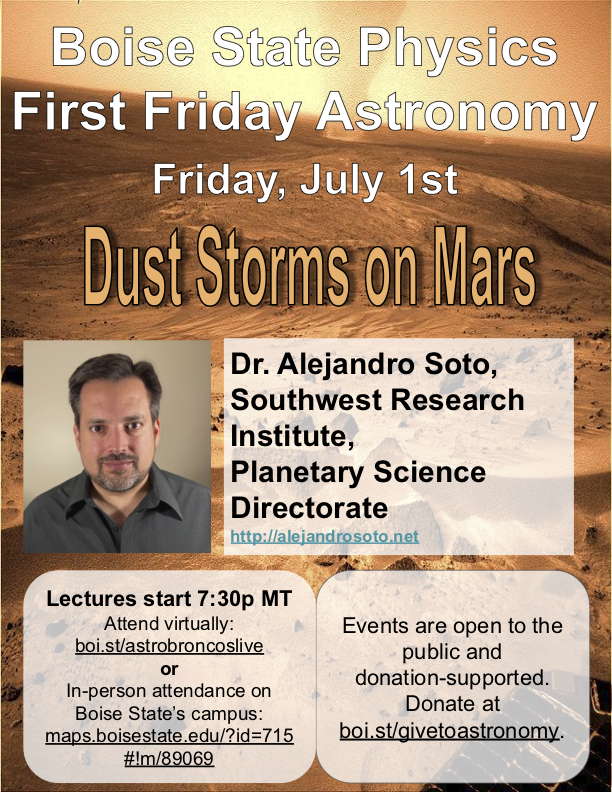Want to learn more about life’s chemical story? Join Boise State Physics for our First Friday Astronomy event on Fri, Sep 2 at 7:30p MT when we will host University of South Florida’s Prof. Matthew Pasek. Attend in-person (https://maps.boisestate.edu/?id=715#!m/89075) or virtually (boi.st/astrobroncoslive).
Public Outreach
Like the musical “Hamilton”, the James Webb Space Telescope lives up to the hype. Already, astronomers have used it to discover galaxies older and more distant than ever before, and it’s only getting started. One of the astronomical processes JWST will elucidate is the formation of stars. Understanding star formation is critical if we want to answer questions about the origin of life on Earth and the possibility for life elsewhere in the universe. But even though scientists have been thinking about star formation since before the word “scientist” existed, some of the most basic questions about the process remain unanswered.
Continue ReadingJoin Boise State Physics on Friday, July 1st at 7:30p MT for our First Friday Astronomy event to hear Dr. Alejandro Soto of SwRI discuss the science of “Dust Storms on Mars”.
The presentation will be live-streamed and recorded at boi.st/astrobroncoslive.

Although our current understanding of gravity, the theory of general relativity, arose only one hundred years ago, scientists were speculating about exotic gravitational effects going back to before the word “scientist” even existed. Today, astronomers employ gravity in a variety of ways to study the cosmos, to look for planets outside our solar system and even to weigh some of the largest celestial bodies in existence. These measurements have shed light on some of the darkest of astronomical mysteries.
Continue Reading
First Friday Astronomy/So You Got a Telescope? Event – 2022 June 3
Did you get a new telescope, find an old telescope, just need help to learning how to use your telescope? Join Boise Astronomical Society for a hands-on telescope tutorial. Tutorial starts 5p MT at Boise State: maps.boisestate.edu/?id=715#!m/89075.
followed by
Weighing and Measuring the Universe with Galaxy Clusters – Dr. Andres Salcedo, U of Arizona
Lecture starts 7:30p MT
Attend virtually: boi.st/astrobroncoslive or In-person attendance on Boise State’s campus: maps.boisestate.edu/?id=715#!m/89069
Watch Dr. Salcedo’s talk!
Jupiter’s moon Io has long been famous for its sky-splitting volcanic eruptions, powered by Jupiter’s tidal gravity. But strange ridge-like features in regions adjacent to the volcanoes have raised questions since their discovery — What are they? How are they formed? Are they somehow related to the volcanoes? A recent study has argued that, even under Io’s whisper-thin atmosphere, these ridges are probably vast dune fields. This new discovery adds yet another world to our growing trove of worlds where aeolian processes operate.

You may not know it, but every time you sweep your floor, you’re conducting an experiment in planet formation. The growth of dust bunnies under your broom resembles in some ways the processes of agglomeration that took place in the early Solar System and eventually produced the planets. By studying ongoing planet formation in other solar systems, we can probe the murky origins of our own Solar System. Insights from a Enlightenment-era German philosopher and World War II mathematicians, bolstered by newly bloomed mechanical desert flora, are uncovering the chaos that pervaded our Solar System’s beginnings.
Continue Reading
The tidal bore in the Bay of Fundy carries billions of tons of water up the estuary at 15 km per hour, illustrating the immense power of tides. But tidal interactions in planetary systems can do more than produce killer rafting: the Earth’s tidal grip has shaped the Moon’s rotation and orbit over billions of years. But tides also power volcanoes on Jupiter’s moon Io so potent they can be seen across the Solar System and may even be the key to life in the icy moon Europa.
Continue Reading